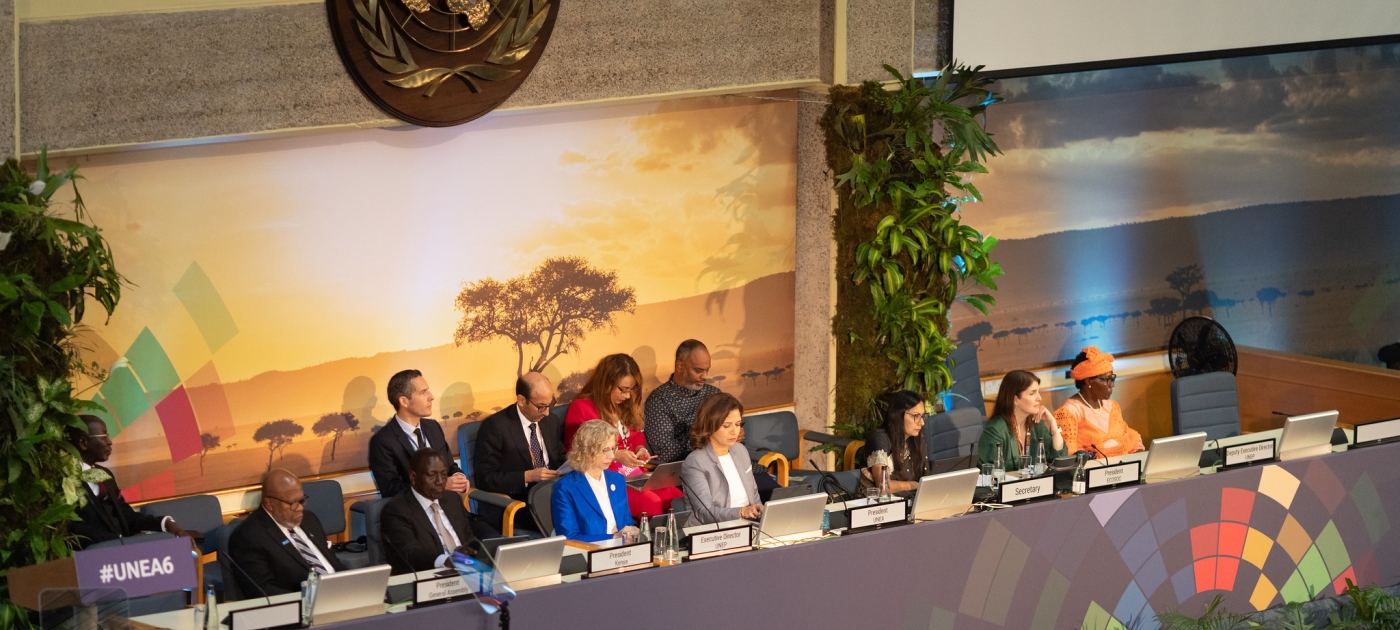Member (South-East) Governing Board and Chairman, Committee on Security, Climate Change and Special Interventions, North-East Development Commission Hon. Sam Onuigbo has maintained that the Nigerian Climate Change Act was designed not only to mitigate the impacts of climate change but also to facilitate adaptation and associated measures that are essential for the sustainability of the environment and the prosperity of the people.
He made this in a keynote address at the Northwest Commissioners’ Summit on Environment and Climate Change in Kano on Thursday, February 29, 2024.
The imperative of this gathering is that we align our efforts with the objectives outlined in the Nigerian Climate Change Act. This landmark legislation was designed not only to mitigate the impacts of climate change but also to facilitate adaptation and associated measures that are essential for the sustainability of our environment and the prosperity of our people.
Accordingly, Section 1 of the Act captures the overall objectives and states, “This Act provides a framework for achieving low greenhouse gas (GHG) emissions, inclusive green growth and sustainable economic development…” In addition, the Act provides in Section 3(1) that “there is established the National Council on Climate Change (in this Act referred to as “The Council”), which shall be vested with powers to make policies and decisions on all matters concerning Climate Change in Nigeria.” Furthermore, Section 5(1) (a-u) list the 23-member Council beginning with the President, Vice-President the Director-General of the Council.
Flowing from the above, let us first delve into the third objective of the Climate Change Act, which emphasises mainstreaming climate change actions in line with national development priorities. The objective recognises that climate change is not just an environmental issue but a cross-cutting challenge that permeates various sectors of society. For the Northwest Region, climate change is not a distant threat but a present reality, manifesting in the form of extreme weather events such as prolonged droughts, desertification, erratic rainfall patterns, and increased temperatures.
All these exert immense pressure on our agricultural systems, water resources, health, infrastructure, transportation, and energy, resulting in forced migration, poverty, conflict over scarce resources, as well as insecurity. It is therefore important to state that the devastating consequences of climate change and accompanying insecurity were acknowledged by the United Nations in its Resolution UN/R/63/281 of June 3, 2009.
The United Nations Framework Convention on Climate Change (UNFCCC) underscores the importance of building climate resilience in vulnerable regions, stating that “enhancing adaptive capacity, strengthening resilience, and reducing vulnerability to climate change are complementary approaches for reducing and managing climate-related risks.” This quote underscores the need for proactive measures to enhance our region’s resilience to the impacts of climate change, thereby safeguarding the well-being of our communities and ensuring sustainable development.
In 2005, the Africa Union conceived the idea of forming The Great Green Wall covering 11 countries in the Sahel-Sahara region from Senegal on the West to Djibouti on the East, to “combat desertification, improve soil fertility, and promote sustainable land use practices.” The Great Green Wall, which was launched in 2007, is home to 232 million people across 11 countries.
It should be emphasised that six out of the seven states in the Northwest Region, namely, Jigawa, Kano, Kebbi, Katsina, Sokoto and Zamfara, occupy a significant portion of the arid zone states in Nigeria, captured by the Pan African Great-Green Wall. The other arid zone states recognised by the Great Green Wall are in the Northeast Region, and they are Borno, Adamawa, Yobe, Bauchi and Gombe.
To illustrate the urgency of this objective, let us consider some pertinent findings specific to the Northwest region. According to recent studies conducted by the Nigerian Meteorological Agency (NiMet), temperatures in the region have been steadily rising over the past few decades, with projections indicating further increases in the coming years. This trend not only exacerbates heat-related health risks but also poses challenges to agricultural productivity, as certain crops become less viable under higher temperatures.
The World Bank estimates that climate-related shocks such as droughts and floods, which have increased in frequency and intensity, have the potential to push millions of people in Nigeria into poverty, with the Northwest being particularly vulnerable due to its arid and semi-arid climate.
The UNFCCC emphasises the importance of mainstreaming climate change adaptation and mitigation into national and subnational policies, stating that “integrating climate change considerations into development planning can help identify synergies and trade-offs, optimize resource allocation, and build climate resilience across sectors.” This quote highlights the need for holistic and integrated approaches to climate action that transcend traditional silos and foster collaboration among stakeholders.
It is an indisputable fact that Nigeria has one of the largest and most active youth populations globally. At this juncture, I would like to refer to the Number Three (3) Strategic Objectives of the Surge Africa Youth Manifesto on Climate Change 2023, which states “Promote participation and inclusion of youths in government-led initiatives to bridge inclusion gaps and provide opportunities for them to influence decision making.”
It is worthy of note that Section 5(1)(s) of the Climate Change Act 2021 recognises the place of young people in the overall drive to actualize the great objectives of the Act, by identifying the importance and crucial role played by the youth. From this provision, it is therefore as clear as day that the Act has secured a permanent and important seat for the youths in the National Council on Climate Change.
In the context of our climate change summit today, which focuses on the role of the subnational, mainstreaming climate change considerations into development planning is essential for ensuring that our policies and programs are aligned with our climate goals and aspirations. This requires a paradigm shift in how we conceptualise development, moving away from business-as-usual approaches towards more sustainable and climate-resilient pathways.
This important recognition informed the contents of Section 5(1)(p) and (q) where the Act recognises the critical roles of the subnational by incorporating the Chairman of the Governors’ Forum and the President of the Association of Local Governments of Nigeria (ALGON) as members of the National Council on Climate Change. From this provision of the Act, it is clear that the subnationals are recognised as part of the overall objectives to drive climate action across all strata in Nigeria. Therefore, states need to seize this initiative and pass their laws and develop their own Climate Action Plans in line with the peculiarities of their states.
Taking a cue from the objectives stated in Section (1)(d), states should work out ways of facilitating the mobilisation of finance and other resources necessary to ensure effective actions on climate change. It is in recognition of this that I urge the critical players in the state – the State Assemblies and the State Executive Councils – to collaborate in taking positive actions on climate change issues for a better and more sustainable future.
To illustrate the significance of this objective, let us consider the case of infrastructure development in the Northwest region. As we strive to address the region’s pressing infrastructure needs, such as road networks, irrigation systems, and energy facilities, we must mobilise necessary finance and integrate climate change considerations into our planning and decision-making processes across all tiers of government –Federal, States and Local Governments.
For instance, incorporating climate-resilient design standards into infrastructure projects can help mitigate the risks of damage and disruption to supply chains posed by extreme weather events. This will enhance the long-term durability and effectiveness of our investments. Similarly, prioritising renewable energy sources such as solar and wind power, can not only reduce our carbon footprint but also enhance energy security and resilience in the face of climate-related disruptions. I urge the subnational to leverage the provisions of the Electricity Act 2023 on renewable energy and on how to extend power to rural communities.
In conclusion, the objectives of the Nigerian Climate Change Act provide a robust framework for guiding our collective efforts towards a more sustainable and climate-resilient future for the Northwest region. By promoting climate-resilient development and mainstreaming climate change considerations into our decision-making processes, we can pave the way for a more prosperous and secure tomorrow for generations to come.
From the above provisions, it is clear that the Climate Change Act recognizes and provides for all tiers of government, the Organised Private Sector, Civil Society Organisations and also the Youths, Women and people with disabilities. In section 22, the Act also provides that Ministries, Departments and Agencies (MDAs), shall establish a climate change desk to be supervised by an officer not below the Directorate cadre who shall be responsible for ensuring the integration of climate change activities into their core mandate.
Therefore, let us seize this opportunity to galvanise action, foster collaboration, and catalyze transformative change in the Northwest region. Together, we can rise to the challenge of climate change and chart a course toward a brighter and more resilient future for all.





